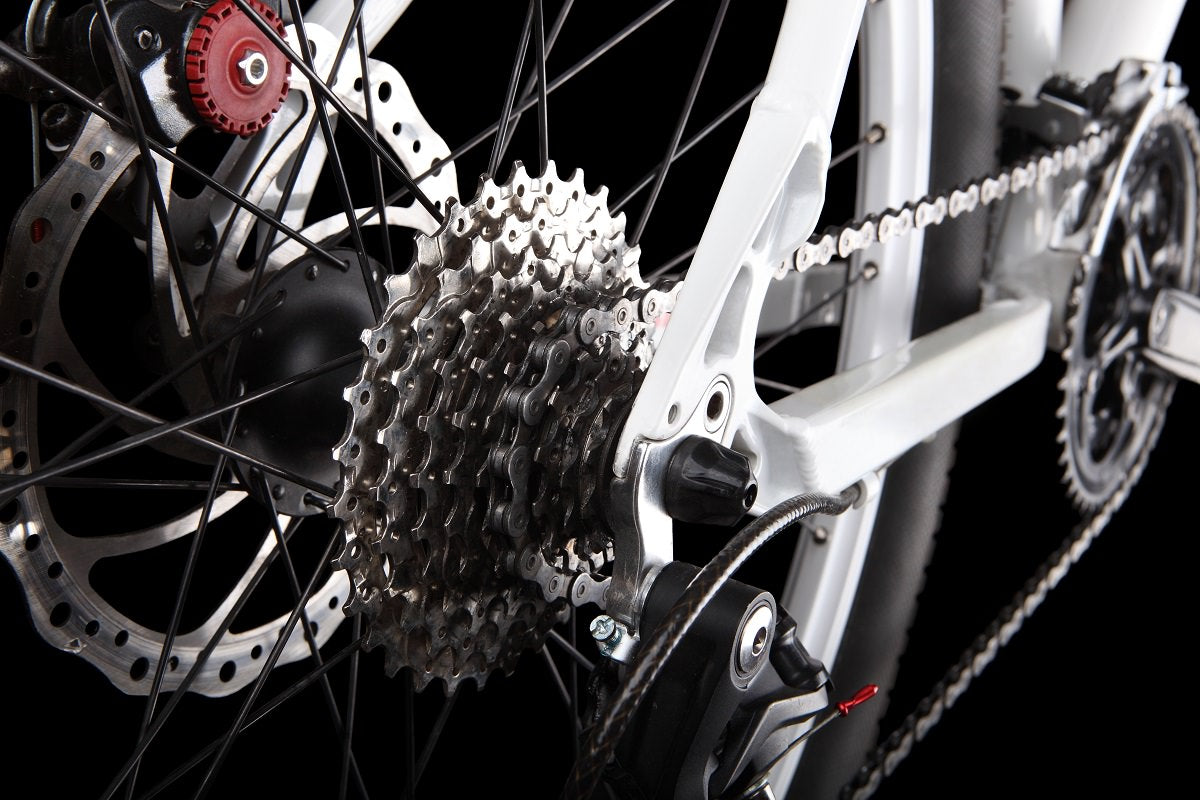COMING CLEAN WITH DISC BRAKES
Disc brakes are the trending technology of the moment. So much so that major cycle brands are releasing state-of-the art bikes with discs only, and rim brakes are not even an option on these models. Discs are in favor these days because they offer many advantages. And this is not simply because the stopping power of these brakes is greatly amplified by a hydraulic system. Discs are better in the rain, or when riding on technical courses – because they accommodate fatter tyres at lower pressures for better road holding. The tyre and carbon rim combination can be optimally aerodynamic in shape, with no need to provide a braking surface. And the overheating or rapid wear suffered by box-section alloy rims on a long mountain descent is no longer a worry. Aero carbon frame designers love disc brakes, because the components can be tucked away out of the air stream, for less overall turbulence.
But there's a price to be paid for all this progress. Cyclists who move to discs must forget almost everything they thought they knew about the maintenance of brakes. It is no longer sufficient to lubricate, check brake block wear, caliper alignment and cable tension. On your first ride with discs, bed the system in with a series of firm stops. Maybe as many as a dozen will be enough to raise the temperature and get the brake parts interacting effectively. Some disc systems are non-hydraulic and use the familiar old brake cables we know. But in the world of hydraulics, complex matters such as mount facing, hose cutting, and bleeding are best left to the professionals at your favorite bike shop. An amateur would need some professional tools to dabble successfully in hydraulic systems.

This is a non-hydraulic cable-operated disc brake.
But keeping the brakes clean remains a vital job which the proud owner should carry out in person. Dirty rim brakes crusted with mud can still stop a bike. But a disc brake system must be surgically clean if it's going to work properly. And keeping your discs in perfect order takes attention to detail and close concentration. This is especially true if you ride a daily commute on roads where motor vehicles leak oil. It's going to splash up onto your rotors and reduce their power.
Lesson Number One: Keep it clean. The discs themselves, the rotors, can only function if there is absolutely nothing on them. Especially oil, in any form. That means you must take great care when washing or servicing your bike – to keep grease or oil away from the discs. This is not a joke – even fingerprints on the discs will affect performance because they contain oil from your skin. So don't touch! Take the wheel off when using an aerosol lubricant on your chain, rings or rear derailleur, and don't use just any old rag to wipe the discs down. A clean rag straight out of the washing machine will do – or even better, a paper towel.

Lesson Number Two: There are several commercially-available products, specially formulated to keep disc surfaces spotless. They come in a spray form, and will dissolve any grease, mud or oil that has found its way onto the disc. Or, as a good money-saving alternative, you could pop round to the supermarket and get yourself a small bottle of isopropyl alcohol. This useful liquid is a powerful antiseptic, and it works well on brake rotors without harming the piston seals. Don't overdo it – put the isopropyl in a plastic spray bottle, and give the rotors a few puffs. Then wipe down softly with a paper towel.
Lesson Number Three: Ask your friendly neighborhood bike mechanic for a plastic feeler gauge that has a correct sliding fit between rotor and pad. When the front wheel comes off for transport on a car bike rack, you'll use the gauge to get it back on correctly – especially if the brake lever has sustained an accidental squeeze during the journey. Too many squeezes with no wheel fitted – and your calipers could get so wide apart that the pistons might drop out and then you'll need a bleed to get air bubbles out of the system. Try a business card (without a hint of oil on it!) instead of a feeler gauge. It's a good substitute out on the road. Shove them between pads and rotor when pistons are out of synch, and readjust.

This hub is designed to accept a rotor.
Lesson Number Four: Be prepared to use gentle force to straighten a disc which has developed a wobble. If it's giving off a sound at one position in the wheel's revolution, the pad could be scraping on the rotor at that point. Working in bright light, you can bend it away from the pad at this point. Cold set it, using a clean shifting spanner. Even the power of your bare hands might be enough, so long as a paper towel protects the rotor surface.

Before you lubricate this freewheel cluster, take off the wheel. You don't want to get oil on that disc!
Lesson Number Five: Nothing lasts forever, especially brake parts. Choose your pads for their intended purpose. Sintered pads are long-life, and cope well with mountain descents – but they can squeak in the rain – and after they heat up. Semi-metal pads are okay for less demanding rides, but they can be costly. Organic pads give great stopping power, especially when new, but their life is shorter. All pads will eventually be smoothed out by hard work, and you will feel that braking power has decreased when the levers feel softer. But you can prolong a clean pad's usable life by giving it a quick rub with sandpaper – up to 120 grit. Some riders risk heating glazed-over pads with a blowtorch. But this is something we cannot recommend from a safety point of view. Any trace of grease on a pad means you'll have to toss it. At the same time, check the rotor. That's one part of the system that doesn't wear out as often as brake pads do. But check anyway – for if you haven't been keeping that rotor surgically clean, it might have to go into the dumpster as well.

The trending road wheel -- with carbon rim and a disc brake









